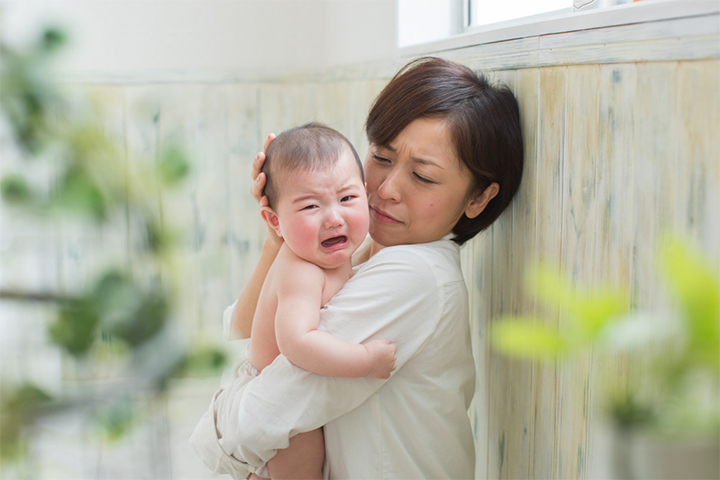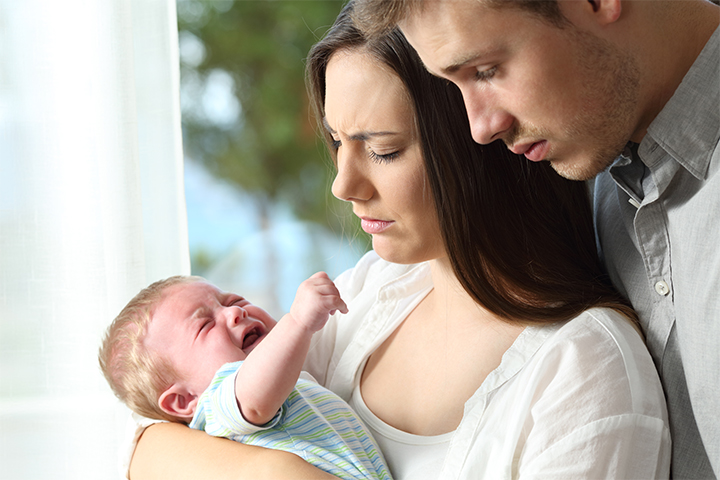“Why do babies get clingy?” is a common question many parents have when their little ones start demanding to be around parents or caregivers all the time. Clinginess is a normal sign of mental development at an early age. It can also signify separation anxiety, where a baby may cry or behave crankily to be away from the parents. Babies and toddlers can express strong emotions and behaviors when away from the one they love to cling to all time.
A clingy baby is also called a Velcro baby since they may not like putting them down from the hands of a parent or a caregiver. Although babies may cry and throw tantrums when away from their favorite person, it is manageable to make them overcome this phase. Read on to find out why babies get clingy and how to manage them.
Stranger Anxiety
Babies can differentiate familiar faces from strangers by the age of six months. What is termed “stranger anxiety” typically develops around nine months, but has a wide range. The behavior reflects a child’s cognitive development. While infants recognize their caregivers from birth, by around nine months they have the capacity to hold the caregiver’s image in their mind and recognize another person as a relative stranger. Stranger anxiety is part of the baby’s normal social and emotional development (1) (2). It indicates developmental progress in the baby’s awareness of their surroundings and their primary caregivers
In the early months of infancy, a child may cry for food, love, or attention, other than any physical troubles. Young babies think that the parent or primary caregiver is part of them. As the little brain grows, they realize that you are a separate person, and may grow fussy, start crying and become clingy.
At this stage clinginess may occur even if you are in their presence, even with familiar people such as grandparents. Infants differ widely in the degree to which they experience typical stranger anxiety. The behavior may be exacerbated under stress, such as illness or a move to an unfamiliar environment. If your baby suddenly becomes significantly more clingy than usual, they may be communicating stress. This stress could be from an illness, a move to an unfamiliar environment, or something more serious such as a neglectful or abusive caregiver.
Charlie, a mum to a baby boy and a blogger, shares her experience of her baby being clingy at fourteen weeks. She says, “Thank god we made it out alive… I mean, it’s hard enough dealing with a new baby when you’re tired. Let alone a crying, clingy, cranky baby who has stopped sleeping all together!… Ollie started to get more and more fussy during the day and night time. He was incredibly clingy, forever cranky, and I’m not sure if he did anything other than cry for a grueling six to eight weeks. We found him extremely difficult most of the time, to be honest. He would cry, squeal, and scream almost as if he were in pain (i).’’
Does Your Child Have Separation Anxiety?
Separation anxiety is a different phenomenon from stranger anxiety. It is closely linked to a child’s security of attachment. When young children feel secure and safe in their relationship with their caregiver, they typically become upset when separated (3). However, they are easily comforted when the caregiver returns. Children differ widely in the degree of separation anxiety they experience. Usually, the intense separation anxiety gradually subsides as children mature and develop significant relationships outside the home. But according to the Children’s Hospital of Philadelphia, about 3% of children will continue to experience separation anxiety into elementary school. If separation anxiety persists or occurs in an extreme form that is disruptive to the functioning of your family, your child may be communicating a level of stress beyond their ability to manage. A consultation with your pediatrician can be useful to identify the source of stress (1).
Tips For Dealing With A Clingy Baby
Clingy behavior can be stressful for both parents and children. But remember that clinginess is typically a sign of positive development, and there is no need to feel guilty about staying away from your baby for necessities. You may use various techniques to ensure your baby learns to accept your absence. Sneaking out can make your child clingier when you are back. So, you may inform your little one before you go, to get over the clingy phase as soon as possible.
The following tips may help you to handle your little one’s clinginess or separation anxiety and meltdown when you have to be away from them for work or when the baby is clingy for other reasons (1).
1. Gradual separation may cause less meltdown
Children are sensitive to separation. You may try to leave them in another room or with a family member for short periods in the initial days. You may initially leave them with someone who they are comfortable or attached with, such as a trusted caregiver or the other parent. Later, you may try grandparents or any other responsible and affectionate person who would take care of the baby while you are away.
When you return, always talk to the baby to assure them that you will be back and not leave them alone. Moms who need to go back to work after maternity leave may try a shorter duration of separation before leaving. These steps can be helpful if you are planning to send the baby to daycare.
2. Give toys or your cloth
You can give your baby’s favorite toy for them to play with when you are away. You may also provide a scarf or some of your clothes that your baby could feel comfortable with or is attached to. Ensure that you are giving safe toys and other items that do not pose a choking or strangulation hazard to the baby.
3. Hide your emotions while leaving them alone
If your baby notices that you are also upset or sobbing, then they may become clingier and start crying. Wave hands and say goodbye with a smile when leaving the baby at daycare or kindergarten. This may give them some assurance that you will be back soon, and that there is nothing to get insecure or worried about.
4. Share the plan with toddlers
If your child is old enough to understand, then you can talk to them about what you will be doing later, that is, after the separation period. You may tell them that you will take them out, watch some cartoons, or play something together after kindergarten or after your office work.
These plans could reinforce that you will be back and thus help your child to stay calm. Remember to keep your promises to gain your child’s confidence.
5. Clinginess is temporary
Babies and toddlers can learn to accept regular separation for a short time. You will see your Velcro baby happily waving hands when you go to work or leave them at daycare or nurseries.
6. Do a regular practice
Children do well when separations follow a regular pattern. Always say goodbye, give an affectionate kiss, wave goodbye, or tell them that you will be back when you are leaving them. Stick to any of these exit plans every day. This could make them understand that you will be away for some time and would come back soon.
Stranger and separation anxieties are a regular part of a child’s development, and children could have a vast range of normal behaviors based on their distinctive temperaments. Sometimes, babies can get clingy if they have an illness, severe pain, a fever, or other medical problems. However, if your baby’s clingy behavior seems excessive, present without any suitable reason, for attention-seeking purposes, or disruptive to family functioning, you may consult your doctor to clarify your concerns. Seeking professional help to deal with a clingy baby could help you support them in the smooth transitioning of their developmental phases. Further, you can help them understand that this separation is temporary, thus aiding in alleviating their clingy behavior.
Key Pointers
- Clinginess in babies is a normal sign of mental development at an early age and can also indicate separation anxiety.
- Stranger anxiety typically develops around 9 months and is a sign of the baby’s growing awareness of their surroundings and caregivers.
- Separation anxiety is closely linked to a child’s sense of security and extent of relationship with their caregiver.
- Techniques to help babies overcome clinginess and separation anxiety include gradual separation, giving toys or a piece of cloth, and hiding emotions while leaving the baby alone.
Learn helpful ways for dealing with clinging babies. This essential video for parents provides valuable guidance and support, including suggestions on soothing tears and asking for proper assistance.















